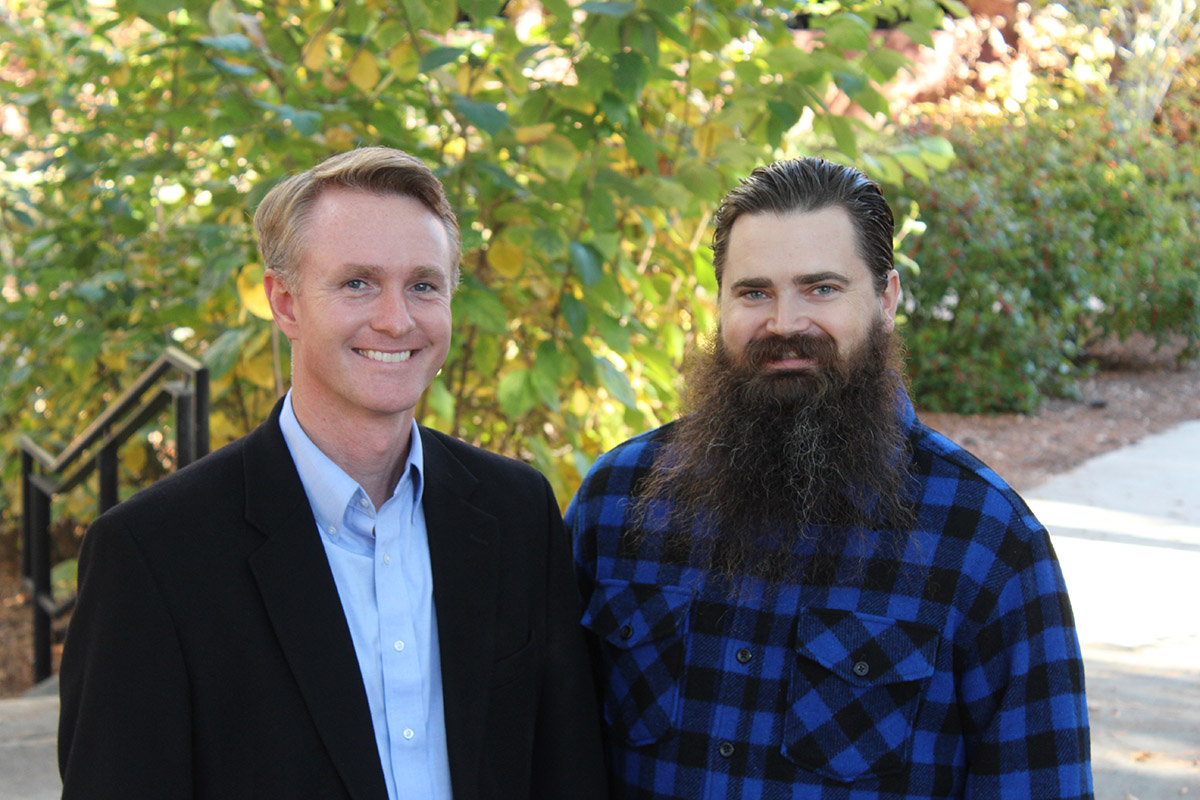Farming the Highway
First year MLA student Matt Quirey and BLA program director Brad Davis are partners in a three-year project with the Georgia Department of Transportation (GDOT), The Land Institute, and The Ray, an 18-mile section of highway dedicated to transforming the transportation infrastructure of the future and supported by the Ray C. Anderson Foundation. Davis and Quirey have installed and will be monitoring a newly developed type of perennial wheat grass (Kernza®). The plot is located at Exit 6 on Interstate 85 near the Kia Motors manufacturing plant.

The effort is part of an ongoing program by the GDOT to manage rights-of-way using pollinator meadows, bio-swales, and now a harvestable wheat grass. The new strain of wheat is called Kernza® and was developed by the Land Institute in Salina, Kansas, a research organization dedicated to advancing perennial grain crops and polyculture to amend destructive agricultural practices. Unlike conventional wheat grasses, Kernza® has deep, ten-foot roots that help enrich the soil. The plantings on the 1,000-square-foot plot will help retain water and sequester carbon as well. Davis and Quirey will be gathering data for the next three years on the viability of Kernza to grow and reproduce in the southeastern U.S. This plot is the first planting outside of the Midwest. (This pilot is part of a larger study by the two researchers to develop forb-heavy native perennial seed mixes to be planted in fall, 2018.)
“The College of Environment and Design is proud to partner with The Ray, GDOT, and the Land Institute on this first trial of Kernza® in a southern locale,” said Professor Davis, “We are keenly aware of the potential for perennial grains to transform agriculture and fiber farming, and to improve the way we manage millions of acres of land across the nation and around the world. As landscape architects, planners, and historic preservationists, we have long advocated for more sustainable land management practices and we are enthusiastic in our support of the research goals and mission of the Land Institute. We hope this first small trial will prove successful and pave the way for adoption and expansion across the region and to other innovative perennial seed crops in the future,” he says.
The Land Institute’s Kernza® perennial grain is featured in the book, Drawdown, which discusses the wheat’s potential to reduce carbon emission. “Eyes are opening to the power of soil for carbon drawdown – even in unlikely places and especially with deep-rooted, perennial crops like Kernza®,” said Dr. Katharine Wilkinson, Senior Writer at Project Drawdown, another non-profit research organization. The Ray’s chairman, Harriet Langford, hopes this pilot study will evolve into a vegetative laboratory for interstate highway ecological health: “By growing and harvesting wheat in the right-of-way, we’re creating a new economic opportunity as well, while drawing down carbon.”
For more information about the College of Environment and Design at UGA, go to www.ced.uga.edu or contact Brad Davis at bdavis@uga.edu.
